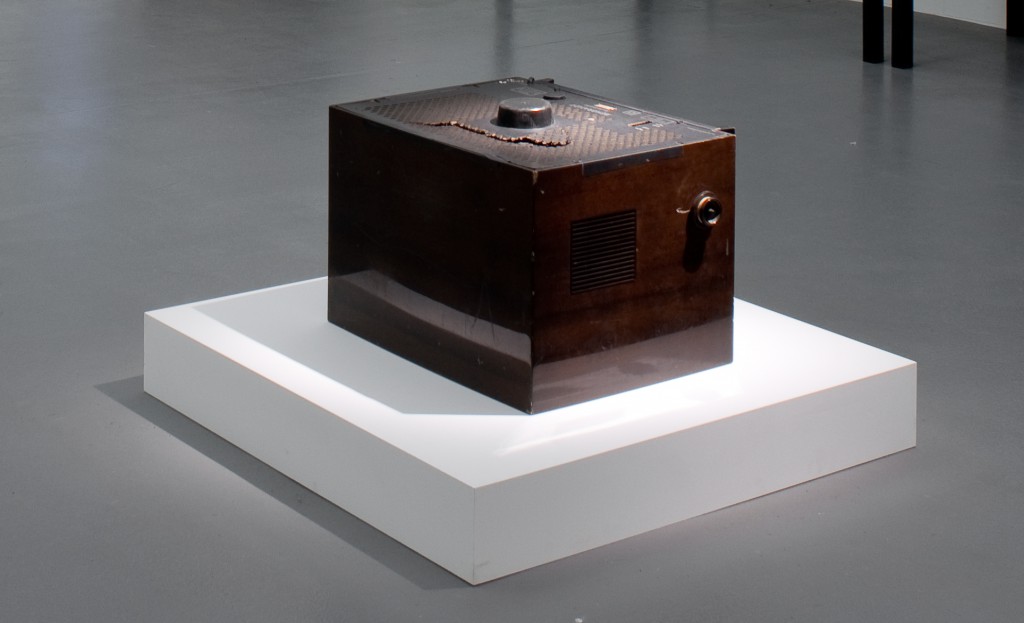
Information
Information
Do images always have to be seen in order to retain their meaning? In Rembrandt Automatic (1963), named for a television brand, Paik turned a television (still plugged in) over onto its screen, thus obscuring its primary means of communication. In this position, the sound and light from the screen were still perceptible, but the viewers’ direct access to representational images was denied. Although the monitor remained off in the years following its inception, Paik’s project emphasizes the potential of television as a vehicle for the transmission of images—a logic similar to Guy Debord’s Hurlements which exposed cinematic understructures, John Cage’s 4’33”, which underscored the durational framework of music and sound, and Paik’s Zen for Film, which unveiled the physical understructure of film. Whereas the Rembrandt’s art hinged on intentional images, Paik’s Rembrandt Automatic centers on denying access to the image and, in turn, exposing the television set as a curious readymade. —CA
Image: © Tate, London 2015.